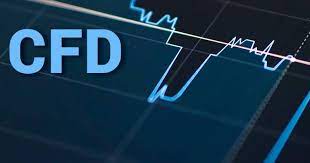
Increasing Profitability with Scalping in CFD Trading
CFD trading is an investment tool that allows you to invest in the value of an asset without actually owning it. CFDs, or contracts for difference, are a form of derivatives trading that can be used to speculate on the price movements of a wide range of assets such as stocks, commodities, indices, and more. It’s a popular trading instrument because it’s relatively simple to understand and offers traders the potential for leverage and short-selling opportunities. In this article, we will discuss what exactly cfd trading is, how it works, and how you can get started.
What is CFD Trading?
CFD stands for Contracts for Difference and is a type of derivative product that enables investors to speculate on the price movements of an asset without needing to own that asset. Instead, traders buy or sell contracts linked to the underlying asset’s price movement without having any ownership rights over the actual asset itself. This gives investors access to a variety of markets with lower costs than traditional investments such as stocks and commodities.
CFDs are typically traded on margin which allows traders access to much higher levels of leverage than they otherwise would have access to if they were buying or selling the underlying asset directly. Leverage magnifies both gains and losses so investors must be aware of the risks associated with this type of trading before entering into any trades.
How Does CFD Trading Work?
The first step in getting started with CFDs is opening an account with a regulated broker who offers these instruments. Once your account has been approved, you can start researching different assets and deciding which ones you want to trade by studying their historical prices and reading up on market news relevant to those assets. When you decide which asset you want to place a trade on, you will need to decide whether you want to go long (buy) or short (sell). Going long means that your prediction is that prices will increase whereas going short means your prediction is that prices will decrease. Depending on whether your prediction was correct or not, your position could result in either gains or losses depending on whether your predictions were accurate or not.
By using stop-losses and take-profits orders when placing trades you can limit your exposure by setting predetermined points at which your positions will close automatically if prices reach certain levels meaning that even if prices move against your position unexpectedly there won’t be any further losses beyond those predetermined points set by yourself ahead of time. This helps ensure risk management when trading these instruments since they carry high levels of leverage compared with other types of investments such as stocks or commodities where there is generally no leverage involved at all.
CFD trading provides investors with a way to speculate on the price movements of various markets without needing any ownership rights over those markets themselves by using margin accounts which offer high levels of leverage but also come with elevated risk due to the potential for large gains as well as large losses depending on market conditions at any given time period so always make sure you do your research thoroughly before entering into any trades involving these instruments! For beginners looking for an introduction into investing in derivatives products like CFDs without taking too much risk then one option may be paper trading first where no real money needs exchanging until one feels confident enough about their strategy before committing real capital towards live positions!